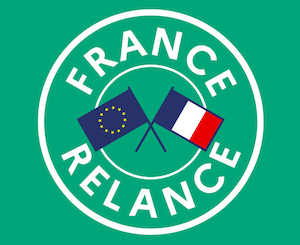As a major stakeholder in the metropolitan region and Euroregion, the University of Lille is playing its part in the collective effort to reduce emissions to which France has committed itself: a 55% reduction by 2030 and carbon neutrality by 2050.
Greenhouse Gas Emissions Report (Bilan des émissions de gaz à effet de serre; BEGES)
In 2020, the University of Lille produced its Greenhouse Gas Emissions Report (Bilan des émissions de gaz à effet de Serre; BEGES), in accordance with its regulatory obligations. It can be accessed on theADEMEwebsite. The next report is scheduled for 2023.
Declaration table Summary
| Direct emissions | 9.7% | |||
| 1.1 | Direct emissions from stationary combustion sources | 9.2% | ||
| 1.2 | Direct emissions from mobile combustion sources | 0.2% | ||
| 1.3 | Direct emissions from non-energy processes | 0.0% | ||
| 1.4 | Direct fugitive emissions | 0.3% | ||
| 1.5 | Biomass emissions (soil and forests) | 0.0% | ||
| Energy | 23.8% | |||
| 2.1 | Indirect emissions from electricity consumption | 4.7% | ||
| 2.2 | Indirect emissions from energy consumption other than electricity | 19.1% | ||
| Travel | 52.7% | |||
| 3.1 | Upstream freight | 0.0% | ||
| 3.2 | Downstream freight | 0.0% | ||
| 3.3 | Commuting to work | 50.7% | ||
| 3.4 | Visitor and customer travel | 0.0% | ||
| 3.5 | Business travel | 2.0% | ||
| Products purchased | 13.8% | |||
| 4.1 | Purchase of goods | 1.3% | ||
| 4.2 | Capital assets | 10.3% | ||
| 4.3 | Waste disposal | 2.2% | ||
| 4.4 | Upstream leasing assets | 0.0% | ||
| 4.5 | Purchase of services | 0.0% | ||
| Products sold | 0.0% | |||
| 5.1 | Use of products sold | 0.0% | ||
| 5.2 | Downstream leasing assets | 0.0% | ||
| 5.3 | End-of-life of products sold | 0.0% | ||
| 5.4 | Investments | 0.0% | ||
| Other indirect emissions | 0.0% | |||
| 6.1 | Other direct emissions | 0.0% | ||
Research units
A BEGES working group supports research units in carrying out their assessment using the labos1point5 tool, and in setting up an action plan. As of the beginning of 2023, 11% of research units had completed their BEGES; 15% were in the process of doingso.
Digital responsibility
The University of Lille is committed to reducing the digital divide while limiting the environmental impact of its digital infrastructures and uses by reviewing all phases of the hardware life cycle.
The steps:
- Manufacturing: by encouraging the purchase of materials that are economical, repairable and have a reduced environmental impact,
- Uses: simple design of digital services and the fight against programmed obsolescence,
- End-of-life of this equipment: repair, reuse and, only then, recycle.
Energy-efficient building refurbishment

As the winner of the 2020 call for projects under the French government’s Energy-efficient Building Refurbishment Stimulus Plan (Plan de relance et rénovation énergétique des bâtiments publics), the University of Lille has been awarded a total of €40 million CCT. Planned measures:
- regrouping of RTU A on a single site on the Cité Scientifique campus,
- Thermal refurbishment of the Faculty of Pharmacy
- and chemistry buildings (C5 and C8) on the Cité Scientifique campus.
Expected gain?
Approximately €500,000/year, representing a final energy saving of 5,290 MWh and 1,123 tonnes of CO2 per year (approximately 9 million km travelled by car).

